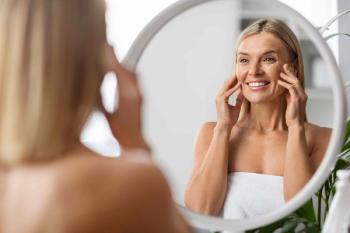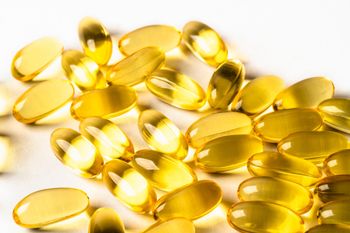
Lutein and Zeaxanthin Reduce Negative Effects of Excessive Digital Screen Time, Blue Light Exposure, in New Study
Using OmniActive’s proprietary Lutemax 2020 marigold extract ingredient, researchers sought to determine the potential benefits of macular carotenoid supplementation on blue-absorbing macular pigment, and whether the study subjects’ sleep quality and visual performance might be improved through supplementation with macular carotenoids.
A new study in Foods1 suggests that supplementation with three macular carotenoids-lutein, zeaxanthin, and meso-zeaxanthin-may improve visual performance, sleep quality, and reduce the negative effects associated with increased digital screen time and blue light exposure. Using OmniActive Health Technologies’ (Morristown, NJ) proprietary Lutemax 2020 marigold extract ingredient, researchers sought to determine the potential benefits of macular carotenoid supplementation on blue-absorbing macular pigment, and whether the study subjects’ sleep quality and visual performance might be improved through supplementation with macular carotenoids. The blue light study adds to the existing body of research on Lutemax 2020’s bioavailability, eye-health, cognitive, and skin benefits, including the recent LAMA I study (2016), the LAMA II study (2016), and the Beautiful Skin Forever (BSF) study (2016).
Lutein and zeaxanthin isomers-known as macular carotenoids-are “natural filters of high-energy blue light,” OmniActive explained in the press release. That high-energy blue light “reaches deep into the eye and can harm the macula-the region of the eye responsible for highest visual acuity-by promoting the production of free radicals.” The short-term effects of blue light exposure include eye strain and eye fatigue, while the long-term effects of blue light exposure are more serious and can lead to a progressive loss of visual function.
The randomized, double-blind, placebo-controlled study was conducted over a period of six months, and included 48 healthy, young adults who spent a minimum of six hours per day in front of a digital screen. Though six hours of screen exposure was the minimum requirement for the study, James Stringham, PhD, lead author of the study, told Nutritional Outlook that many of the subjects admitted to spending as many as 16 or 17 hours in front of a screen per day. “On average it was up there, about eight [hours],” he said. “And that’s without looking at the television. So, it’s a lot of screen time.”
The participants were randomly assigned to one of two groups: a study group supplemented with Lutemax 2020 (the macular carotenoids) at 24 mg/day, or a placebo group. The study subjects were evaluated for Macular Pigment Optical Density (MPOD) and markers of visual performance including contrast sensitivity, critical flicker fusion, disability glare, and photostress recovery. Measurements were recorded at baseline, again at three months, and once more at six months. MPOD was measured with a non-invasive, perceptual task called heterochromatic flicker photometry (HFP). Researchers observed significant increases in MPOD and overall sleep quality, and reduced frequency of headaches, eye strain, and eye fatigue, as well as improvements in visual performance measures in the macular carotenoid group compared with the placebo group. As the study authors noted, “Increased MPOD significantly improves visual performance and, in turn, improves several undesirable physical outcomes associated with excessive screen time.”
Specifically, Stringham noted “improved visual performance, substantial processing speed, or how fast your digital system works,” as well as improved photo stress recovery. “Also…contrast sensitivity increased,” he said. “The ability to discriminate different shades of dark and light. That’s probably the best real-world measure of visual performance there is.”
In the press release, OmniActive said that this blue light study is the first study that examines the impact of macular carotenoid supplementation on visual health and performance, improved sleep quality, and reduced eye strain related to exposure to blue light emitting digital screens.
The Sleep Quality Connection
Stringham noted that these macular carotenoids provide many potential benefits throughout the body, not just to vision health but also potential benefits to other, less-studied benefits like improvements in sleep quality. In this current blue light study, researchers noted an improvement in sleep quality among subjects in the macular carotenoid group.
“One probable explanation is that these carotenoids [are] such great, systemic antioxidants and anti-inflammatories that they probably reduced inflammation,” Stringham told Nutritional Outlook. “Indeed, many of our subjects noted that they were falling asleep faster and that they were tossing and turning less. And that’s probably a symptom of less irritability while you’re sleeping, which could be facilitated by these anti-inflammatories in the body. It’s [a] natural [ingredient], too, which is great.”
Though the researchers noted that in this study, the improvement in sleep quality “was not directly related to increases in MPOD,” Stringham said he is optimistic about the potential for future research in this area. “You’ve probably heard you should put your phone down an hour before you go to bed and stop looking at screens,” he said. “That’s true, but [trouble sleeping], like I mentioned earlier, is probably the result of inflammation, or the reduction of inflammation in the body, which we know lutein in particular [addresses] really well. It would be great to do an actual sleep study” moving forward, he said.
Growing Concern about Eye Health
The need for strategies like macular carotenoid supplementation to counter blue-light exposure are growing. Citing projections from a recent “Global Digital Future in Focus” study, Maryellen Molyneaux, managing partner of market researcher the Natural Marketing Institute (NMI; Harleysville, PA), told Nutritional Outlook that “by the year 2020, globally, there will be 5 billion users of desktops or mobile applications that produce blue light, including smartphones and laptops.” As more and more of daily activities take place on a screen, it’s unlikely that consumers are going to put down their smartphones anytime soon.
At the same time, Molyneaux said, consumers are becoming increasingly concerned about the effects of digital eye strain-especially Millennials and young adults, who use digital devices more frequently and are likely more savvy about the potential negative effects of excessive screen time. Molyneaux points to NMI’s 2017 Supplement, OTC, and Rx Database data, which indicate that 57% of the general population, 65% of Millennials, and 61% of 18- to 19-year-olds are already concerned about their eye health, specifically as it relates to overuse of screen time.
That level of concern, however, starts to drop off among the Baby Boomer population. Molyneaux said this decline in older adults may be a result of those consumers “just not being as savvy about screen time,” even as usage of digital devices increases among this age group. On the other hand, she said, adult parents may feel differently. “When we look at [the data] by parents being concerned about their children’s eye health, it goes up to 82%. So, parents are aware. And yet we want our kids to be smart, to be comfortable around computers and all types of electronic gadgets,” she said.
According to 2016 Nielsen study, a 2013 Vision Watch Survey, and data from the American Optometric Association, Molyneaux said, consumers make 10 million visits to eye doctors each year for screen time–related eye-health problems alone. In addition, 70% of American adults say that they experience some form of digital eye strain-not surprising, given that adults purportedly spend 10 or more hours a day on a digital screen, while children spend at least nine hours a day on a digital screen. The data indicate that consumers need eye-health solutions now more than ever when it comes to screen-related eye-health concerns.
Meeting Consumers Where They Are
With consumer concern for eye health increasing alongside use of digital products, it seems the time may be ripe for companies like OmniActive to find ways to help consumers make the connection between screen time, blue light exposure and harm, and eye health.
Linda Doyle, senior vice president of global marketing, OmniActive, said that the message is not a difficult one for consumers to understand. “The message needs to get out there, but I think once it’s out there it’s an easy switch one for consumers because they get it.” She said that OmniActive is currently working on a few campaigns aimed at increasing consumer awareness about blue light. Stringham explained that consumers of all ages can benefit from macular carotenoid supplementation-not just those who are already experiencing macular degeneration. “We’re meant to consume these nutrients-to have them in our diets. Especially during pregnancy and development.”
Once consumers make the connection between blue light and eye health, it’s important to meet them where they are, she said. “I think, first of all, that diet’s really the best source” of carotenoids, including a diet rich in dark, green, leafy greens and red and orange fruits and vegetables. “But,” she added, “how many kids really enjoy spinach or kale? So, when it comes to supplementation [from a younger age and consuming an adequate amount of carotenoids through diet alone]…even if you were to consume nine servings of fruits and vegetables a day, you’re only getting about 6 mg of lutein and less of zeaxanthin. Even with that 9 [recommended] servings of fruits and vegetables, you’re not getting that minimum 10 mg or 20 mg [of lutein recommended].” Doyle said gummies remain a popular delivery system for these macular carotenoids for children and adults alike.
The typical recommended dosage, as used in the National Institutes of Health’s (NIH) Age-Related Eye Disease Study 2 (AREDS 2) study, is 10 mg lutein and 2 mg zeaxanthin.
The future may hold potential for functional foods, as well. “I think there’s room for functional foods, especially functional beverages. It’s interesting. It really hasn’t taken off as quickly as we thought it might over the years, but maybe the time hasn’t been right,” Doyle said. Increased consumer awareness may open some doors in this space down the road, Doyle noted: “People don’t tend to change their habits that much, so whatever they tend to be doing during the day, however they’re consuming nutrients-whether it’s in a beverage, whether it’s in a bar, pill form, or gummies-it’s really more looking at what they’re doing currently and trying to build around that.”
Also read:
References:
- Stringham JM et al., “Macular carotenoid supplementation improves visual performance, sleep quality, and adverse physical symptoms in those with high screen time exposure.” Foods. Published online June 29, 2017.
Newsletter
From ingredient science to consumer trends, get the intel you need to stay competitive in the nutrition space—subscribe now to Nutritional Outlook.





